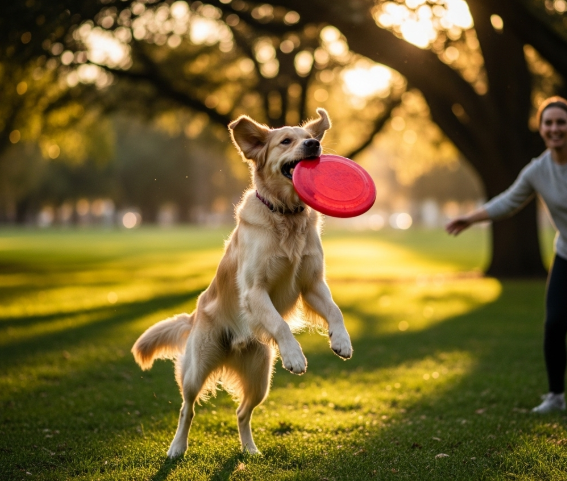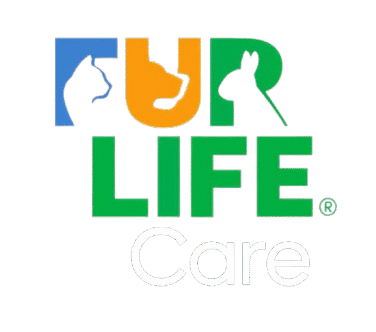“Fetch is just the start of all the fun and bonding you can have with your feline friend”

Why Playtime Is Essential for Your Dog’s Health and Happiness
Whether your dog is chasing after a ball, wrestling at the dog park, or solving a food puzzle, playtime isn’t just fun — it’s vital for their physical and mental well-being.
Benefits of Playtime for Dogs
Playtime acts as a great workout that helps prevent health problems like obesity and diabetes. Mentally stimulating games keep boredom at bay and reduce destructive behaviors. Plus, using play as a reward during positive reinforcement training strengthens your bond with your furry friend — especially if they’re new to your home.
“Playtime is meant to be fun for both you and your dog,” says Em Muench, CPDT-KA, professional dog trainer and founder of Barkology in Des Moines, Iowa. “Find toys your dog loves and build from there. It’s not just about physical exercise — it’s about strengthening your relationship and engaging your dog’s mind.”
5 Fun and Engaging Ways to Play with Your Dog
1. Fetch
Fetch is a classic game loved by many dogs. Use any toy your pup prefers — a ball, plush toy, rope, or anything that excites them. Start slow to gauge their interest and gradually increase playtime. This is especially important for puppies or dogs new to exercise.
Why it’s great: Fetch is fantastic cardio and taps into your dog’s natural chase and retrieve instincts. It’s a classic game that can keep many dogs entertained for long periods.
How to start: Use a toy your dog loves—this could be a ball, a favorite plush toy, a frisbee, or even a rope. Toss it a short distance at first and watch if your dog eagerly chases after it. If your dog is new to fetch, keep sessions brief to avoid overwhelming them.
Tips for success:
- Use positive reinforcement—praise or treats when your dog brings the toy back.
- If your dog doesn’t naturally return the toy, try playing near a wall or fence to encourage retrieval.
- Gradually increase the distance of your throws as your dog’s interest and stamina build.
- Always end on a positive note, before your dog gets bored or tired.
2. Tug-of-War
Perfect for burning energy indoors, tug games also promote bonding. Use a durable toy and entice your dog by waving it on the ground or in the air. If your dog gets too mouthy, pause to maintain good behavior.
Why it’s great: Tug is a fantastic outlet for your dog’s energy and strengthens your bond through interactive play. It also helps build jaw strength and focus.
Getting started: Pick a sturdy, durable tug toy designed to withstand pulling and chewing. A rope toy or a heavy-duty fabric tug toy works well. Wave the toy around on the ground or in the air to catch your dog’s attention.
Key rules:
- Teach your dog to release the toy on command (e.g., “drop it”). Stop the game if they get too aggressive or start biting your hands.
- Keep sessions short to maintain excitement and prevent overstimulation.
- Use tug as a reward after your dog follows a command, combining play with training.
3. Flirt Pole
When you don’t have time for a walk, try a flirt pole — a long rod with a toy dangling from a cord. Move it around to stimulate your dog’s natural chase instincts. It’s like a cat teaser for dogs!
Why it’s great: This is an excellent high-energy activity that mimics hunting behavior, allowing your dog to sprint, jump, and pounce indoors or in small spaces.
How to play: The flirt pole is a long rod with a rope attached that has a toy (lure) on the end. Move the lure quickly side to side, in circles, or up and down just out of reach to encourage your dog to chase it.
Pro tips:
- Let your dog catch the lure occasionally to keep motivation high.
- Vary the speed and direction to simulate a real chase and keep your dog engaged.
- This game is intense, so limit sessions to 10-15 minutes to avoid exhaustion or injury.
- Great for rainy days or when you can’t get to the park.
4. Scent Games
Dogs have an incredible sense of smell. Hide treats around the house or use a snuffle mat to encourage sniffing and mental stimulation. Nose work classes can also teach your dog to identify specific scents.
Why it’s great: Engaging your dog’s sense of smell is mentally exhausting in the best way. It taps into their natural instincts and provides deep cognitive stimulation.
Simple games to try:
- Treat hunt: Hide small treats around the house and encourage your dog to find them. Start easy, then make the hiding spots trickier.
- Snuffle mat: Scatter kibble or treats on a snuffle mat and let your dog forage.
- Nose work classes: Enroll your dog in organized scent training to teach them to identify and locate specific odors.
Tips:
- Keep the scent challenges age and skill-appropriate.
- Always praise your dog for finding scents to keep them engaged.
- Rotate scent games regularly to prevent boredom.
5. Sniffari Walks
Instead of rushing your dog during walks, let them lead the way using their nose. These “sniffaris” allow your dog to explore at their own pace, enhancing their curiosity and enjoyment. For off-leash sniffaris, visit dog parks or book private yards through platforms like SniffSpot.
Why it’s great: Sniffari walks give your dog permission to fully explore the world with their nose, which is deeply satisfying and mentally enriching.
How to do it:
- On your next walk, let your dog stop and sniff for as long as they want—don’t pull on the leash or rush them.
- Let your dog decide the pace and direction based on their interest in smells.
- Choose safe locations where your dog can roam a bit more freely, like dog parks or fenced yards.
Benefits:
- Reduces stress and anxiety by letting your dog engage in natural behaviors.
- Provides mental stimulation without requiring a lot of physical exercise.
- Strengthens your bond as you follow your dog’s lead.
Pro tip: For off-leash sniffari, consider platforms like SniffSpot to find safe private yards where your dog can explore freely.
Tailoring Playtime to Your Dog’s Breed, Size, and Personality
Every dog is unique. While some love nonstop fetch, others prefer more low-key activities. Large breeds usually tolerate rough play better, while smaller dogs might need gentler games. High-energy breeds like Jack Russell Terriers may want to play for hours, while mellow breeds like Great Danes might enjoy shorter sessions.
Ask your breeder or vet for playtime tips specific to your dog’s breed and personality to keep them happy and healthy.
